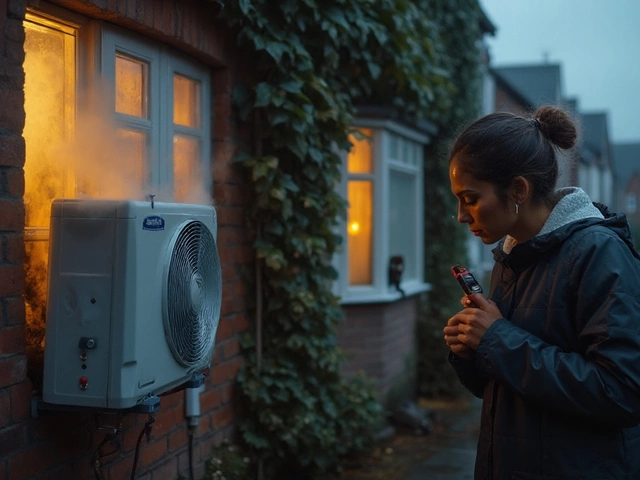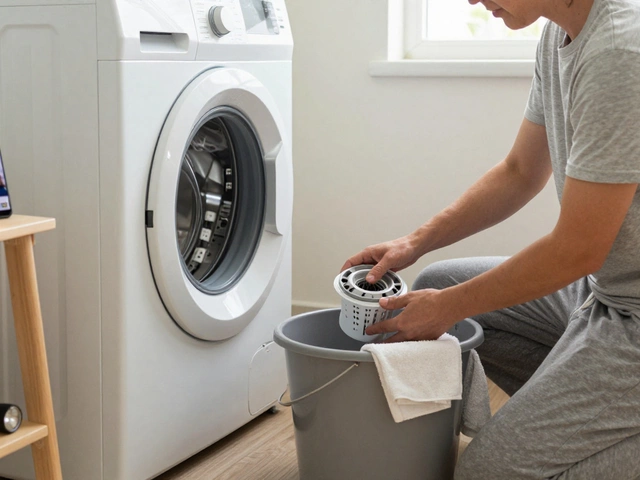Alternatives to Extractor Fans: Smart and Practical Solutions
March 13 2025Diagnose Washing Machine Problems: Simple Steps to Find the Fault
When your washer starts acting up, the first instinct is to call a repair tech. But a lot of the time you can pinpoint the problem yourself and either fix it or give the engineer a clear picture of what’s wrong. Below are the most common signs, what they usually mean, and a handful of quick checks you can do before you pick up the phone.
Common Signs and What They Mean
Machine won’t start. Check that the plug is firmly in the socket and that the circuit breaker hasn’t tripped. A loose door latch can also stop the cycle – close the door firmly and listen for the click.
Water won’t fill. Look at the inlet hoses for kinks or a closed valve. If the hoses look fine, the water inlet filter inside the machine might be clogged with debris. Turn off the water, remove the filter, give it a rinse, and pop it back in.
Drum not spinning or agitating. This often points to a broken drive belt or a faulty motor coupler. Open the back panel (unplug first!) and inspect the belt for cracks or slack. If it looks worn, replace it – it’s a cheap part and a simple DIY job.
Excessive noise. A thumping drum usually means something is stuck in the tub – a stray coin, a button, or a piece of clothing. Run the drum by hand; if you feel a bump, search the space between the drum and the tub. A squealing noise often signals a worn bearing; that’s a job for a pro.
Leaking water. Trace the source. If water pools on top, the detergent drawer seal might be cracked. If it drips from the bottom, the hose connections could be loose or the pump hose could be damaged. Tighten any loose nuts and replace cracked seals.
Quick DIY Checks Before Calling a Pro
Start with the basics: make sure the machine is level. An uneven washer can cause vibration, loud noises, and poor spinning. Use a spirit level and adjust the foot brackets until the washer sits flat on the floor.
Next, run a cleaning cycle with no clothes. Over time, detergent buildup can clog the pump and cause strange smells or drainage issues. Add a cup of white vinegar to the detergent drawer and let the machine run a hot cycle.
Inspect the drain hose. A partially clogged hose will cause water to back up and the machine to stop mid‑cycle. Detach the hose, clear any blockages with a flexible brush, and reattach securely.
If the error code display is flashing, look up the code in the user manual. Most manuals list the meaning and a suggested fix. Often the solution is as simple as resetting the machine – turn it off, wait a minute, and power it back on.
Finally, give the filter a clean. Many front‑load washers have a small door at the bottom that houses a lint filter. A blocked filter prevents proper water flow and can trigger leak alarms.
These checks cover the majority of everyday washer woes. If after trying them the problem persists, it’s time to contact a qualified gas and appliance engineer. A professional can safely test electrical components, replace motors, and ensure your machine complies with safety regulations.
Remember, a quick visual inspection and a few simple actions can save you time and money. Keep a small notebook of any symptoms, what you checked, and the results – it makes the repair call faster and often cheaper.
 7 May
7 May
Washer Problems: How to Diagnose Them Fast
Ever had your washing machine refuse to spin or make weird noises? This article gives you the inside scoop on diagnosing the most common washer problems without the guesswork. You'll get practical advice, easy checks you can do at home, and what to look for before calling in the pros. Catch the issue early and avoid spending a fortune on repairs. Save time, money, and maybe your favorite pair of socks.
Read More...



